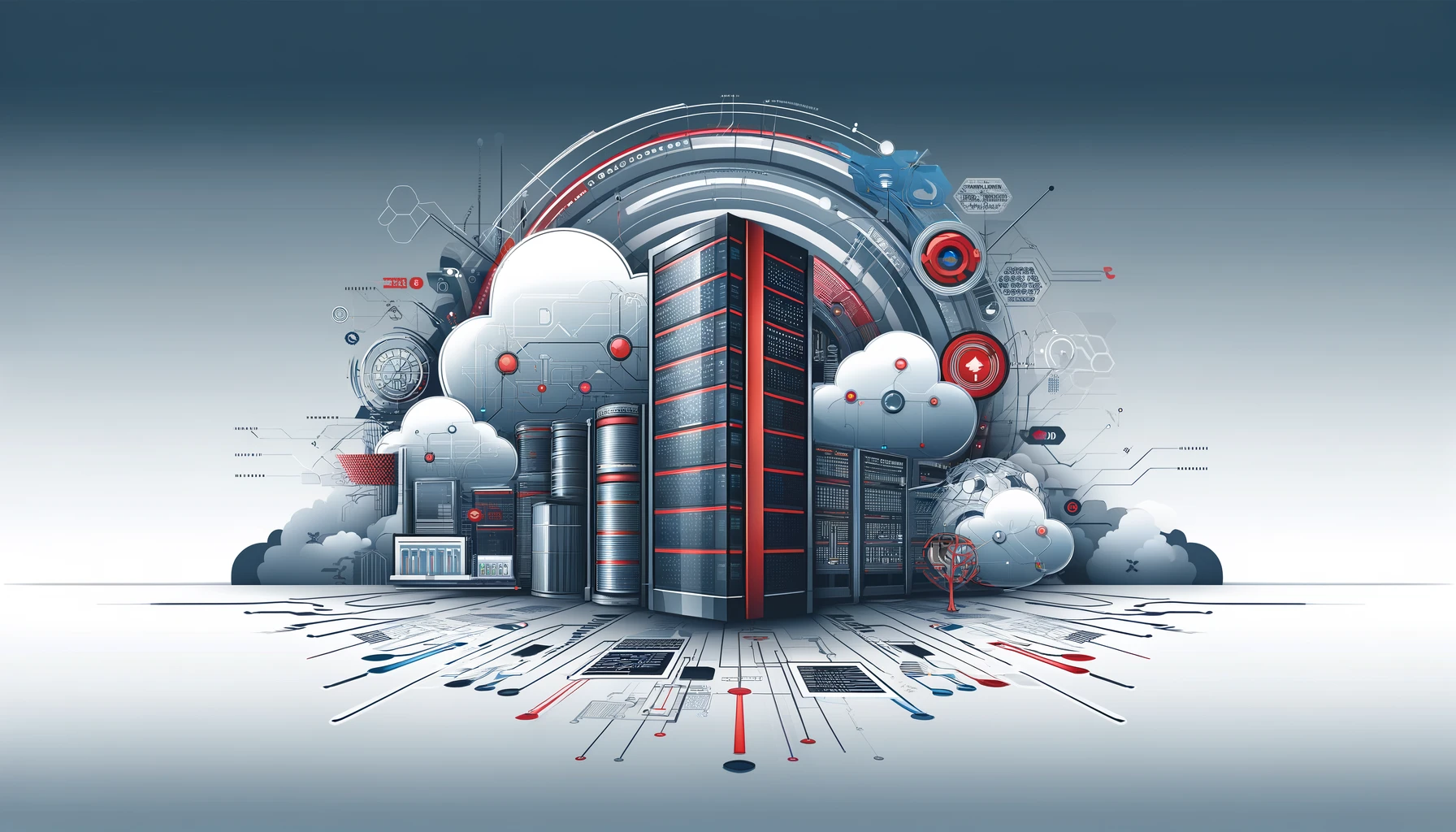AI Has Outgrown Traditional University Infrastructure
Artificial intelligence is reshaping how universities teach, research, and collaborate. But while AI innovation accelerates, the infrastructure supporting it hasn’t kept pace. For many institutions, legacy on-campus data centres have become a costly bottleneck, straining budgets, consuming valuable space, and falling short of the performance required for today’s compute-intensive AI workloads.
The Mounting Pressure on On-Campus Data Centres
University leaders face a growing dilemma: how to support rising AI demands while managing tight budgets, ESG targets, and limited campus space. Traditional infrastructure models are under pressure in several key areas:
- Compute Capacity Gaps: On-campus systems often can’t deliver the speed, scale, or reliability needed for large-scale AI, simulations, or digital twins. Many will be outpaced within 3–5 years.
- Escalating Costs: Maintaining or expanding on-campus facilities requires major capital investment and incurs high ongoing energy and operational expenses.
- Sustainability Challenges: Aging infrastructure is among the most energy-intensive assets on campus, making Net Zero and ESG goals harder to reach—especially without access to high-efficiency environments.
- Space Constraints: Valuable real estate needed for teaching, student services, or new labs is instead tied up in housing outdated IT infrastructure.
- Connectivity Barriers: Limited network capacity can block seamless collaboration, real-time data sharing, and access to global cloud or research ecosystems.
These challenges point to one clear conclusion: universities need infrastructure purpose-built for the AI era.
From Data Centres to AI Factories: What Modern Research Really Needs
AI workloads today, whether training large language models, performing inference at scale, or modelling complex systems like climate or genomics—require more than traditional data centres can offer.
What’s needed now are AI Factories: high-performance environments engineered specifically for dense, accelerated computing.
Consider the dramatic shifts involved:
- Power Multiplication: AI racks consume 10–40× more power than conventional compute, dramatically increasing energy demands.
- Next-Gen Cooling: Liquid cooling, direct-to-chip, and immersion cooling are now essential, replacing conventional air-based systems.
- Built-in Scalability: AI growth is exponential. Infrastructure must be modular, rapidly deployable, and free from legacy constraints.
Without these capabilities, universities face rising retrofit costs, stalled research progress, and missed opportunities to lead in competitive funding rounds or global rankings.
The High Cost of Doing Nothing
Delaying infrastructure transformation carries serious, often hidden risks:
- Drains Precious Resources Skilled staff and budgets are diverted from teaching and research toward maintaining legacy systems.
- Locks Up Capital and Space Obsolete on-campus infrastructure demands ongoing investment and occupies land better used for education and innovation.
- Undermines Sustainability Goals Outdated data centres increase carbon footprints and make Net Zero targets difficult to achieve—impacting public trust and institutional reputation.
- Impacts Rankings & Reputation Infrastructure readiness now influences everything from grant success to student experience, key factors in national and global rankings.
- Stalls Research Progress Without the capacity to support modern AI workloads, universities risk falling behind in research breakthroughs, partnerships, and innovation output.
- Loses Momentum to Faster-Moving Peers Institutions that delay infrastructure transformation risk falling decisively behind more agile, AI-ready competitors, locally and globally.
Why More Universities Are Moving Off-Campus: The Case for Colocation
Forward-thinking institutions are embracing a smarter strategy: relocating critical AI infrastructure to colocation data centres. This isn’t just outsourcing, it’s a future-proof shift that increases agility, unlocks capacity, and reduces risk.
Top Strategic Wins for Universities with Colocation:
Colocation is a strategic move that fundamentally helps universities:
- Reduce Total Cost of Ownership (TCO): By moving off-campus, universities can lower long-term capital and operating expenditure, avoiding the significant costs associated with building and maintaining specialised facilities. This was a key driver for Ohio State University, which chose a state-run colocation facility over a $40 million on-campus build, cutting annual data centre expenses by half and mitigating $4 million in deferred maintenance on their old facility.1
- Immediate Access to Scalable Power & Cooling: Universities can tap into infrastructure precisely optimised for high-density AI, gaining capabilities without the usual delays or immense upfront capital expenditure. Colocation provides a more flexible, lower capital expenditure path to AI-ready infrastructure and more agility.
- AI-Ready Infrastructure, Now: Enable high-density, high-performance workloads in environments already engineered for advanced compute.
- Free Up Campus Space for Core Academic Use
Shift backend IT off-site, reclaiming campus land for classrooms, labs, or student services. Bridgewater State University did just that. - Stronger ESG Alignment
Leverage efficient, NABERS-certified data centres to meet sustainability goals and support evolving global ranking criteria like the QS Sustainability Rankings. - Lower Risk and Higher Uptime
Transfer the burden of building, operating, and maintaining infrastructure to a specialist provider—mitigating financial and operational risk. - Redirect Resources to What Matters: Free up capital and staff time to reinvest in teaching, research, and student experience.
Beyond the Server Room: How Connectivity Drives AI Success
Beyond physical infrastructure, colocation unlocks a powerful advantage that’s often overlooked: direct access to a rich digital ecosystem and next-generation connectivity. For universities building or leveraging AI Factories, this connectivity is not optional—it’s foundational.
AI Factories thrive on the seamless interplay between compute, data, platforms, and people. Without high-performance interconnectivity, even the most advanced infrastructure risks underperformance.
- Global Research Collaboration: Connect instantly and securely to hyperscale cloud platforms, national research networks like AARNet, and international collaborators via strategic subsea cable systems. This enables real-time teamwork on large-scale AI workloads across borders and disciplines.
- Ecosystem Access: Locate your AI Factory within interconnect-dense hubs where research institutions, AI startups, universities, government agencies, and industry partners converge. This proximity accelerates access to GPU platforms, AI model repositories, data pipelines, orchestration tools, and emerging services, fueling innovation through proximity.
- Data Sovereignty & Security: Host sensitive research data in sovereign, Australian-controlled environments that meet compliance requirements across public health, defence, education, and critical research, essential for maintaining grant eligibility, security, and public trust.
- Performance at Scale: AI Factories demand more than power they require massive, always-on bandwidth and ultra-low latency to operate efficiently. This includes:
- Multi-node GPU workloads
- Distributed inference pipelines
- Digital twins and real-time simulation
- Seamless cloud offload and hybrid integration
Colocation provides the network fabric that enables AI infrastructure to reach its full potential—turning isolated compute into connected capability.
AI Infrastructure as a Platform for Digital Transformation
This isn’t just an IT upgrade, it’s a strategic platform for the next era of teaching, learning, and discovery. Universities that embrace colocation now are setting themselves up to lead in a data-driven future, attracting talent, forming powerful partnerships, and delivering research that matters.
Proof in Action: La Trobe Leads the Way
La Trobe University stands as a compelling Australian exemplar. They became the first in Australia to deploy NVIDIA DGX H200 systems within NEXTDC’s colocation environment powering their newly launched Australian Centre for AI in Medical Innovation (ACAMI). This strategic move unlocked immediate access to scalable, AI-optimised infrastructure that is now actively accelerating medical breakthroughs, attracting top research talent, and forming new, invaluable industry partnerships.
Let’s Map Your AI Infrastructure Roadmap
The infrastructure decisions you make today will define your university’s research, teaching, and digital capabilities for the decade ahead.
Evaluating colocation isn’t just an IT decision—it’s a strategic move to elevate academic excellence, meet ESG goals, and strengthen global competitiveness.
Book a 30-minute consultation with NEXTDC’s education team to explore how our sovereign, DGX-ready environments can support your institution’s AI vision—securely, sustainably, and at scale.
Download our AI Ready Checklist
Speak with a NEXTDC specialist
Source:
1. The Ohio State University. “University’s Partnership with State of Ohio Saves Millions in Data Center Costs.” Ohio State News, May 23, 2024. https://news.osu.edu/universitys-partnership-with-state-of-ohio-saves-millions-in-data-center-costs/.
2. Markley Group. “Bridgewater State University: Delivering Internet Cost Savings, Security, and Reliability.” Accessed May 30, 2025. https://www.markleygroup.com/data-center.
3. Data Centre Review. “Colocation: A Sustainable Solution for Universities.” Data Centre Review, August 7, 2024. https://datacentrereview.com/2024/08/colocation-a-sustainable-solution-for-universities/.


